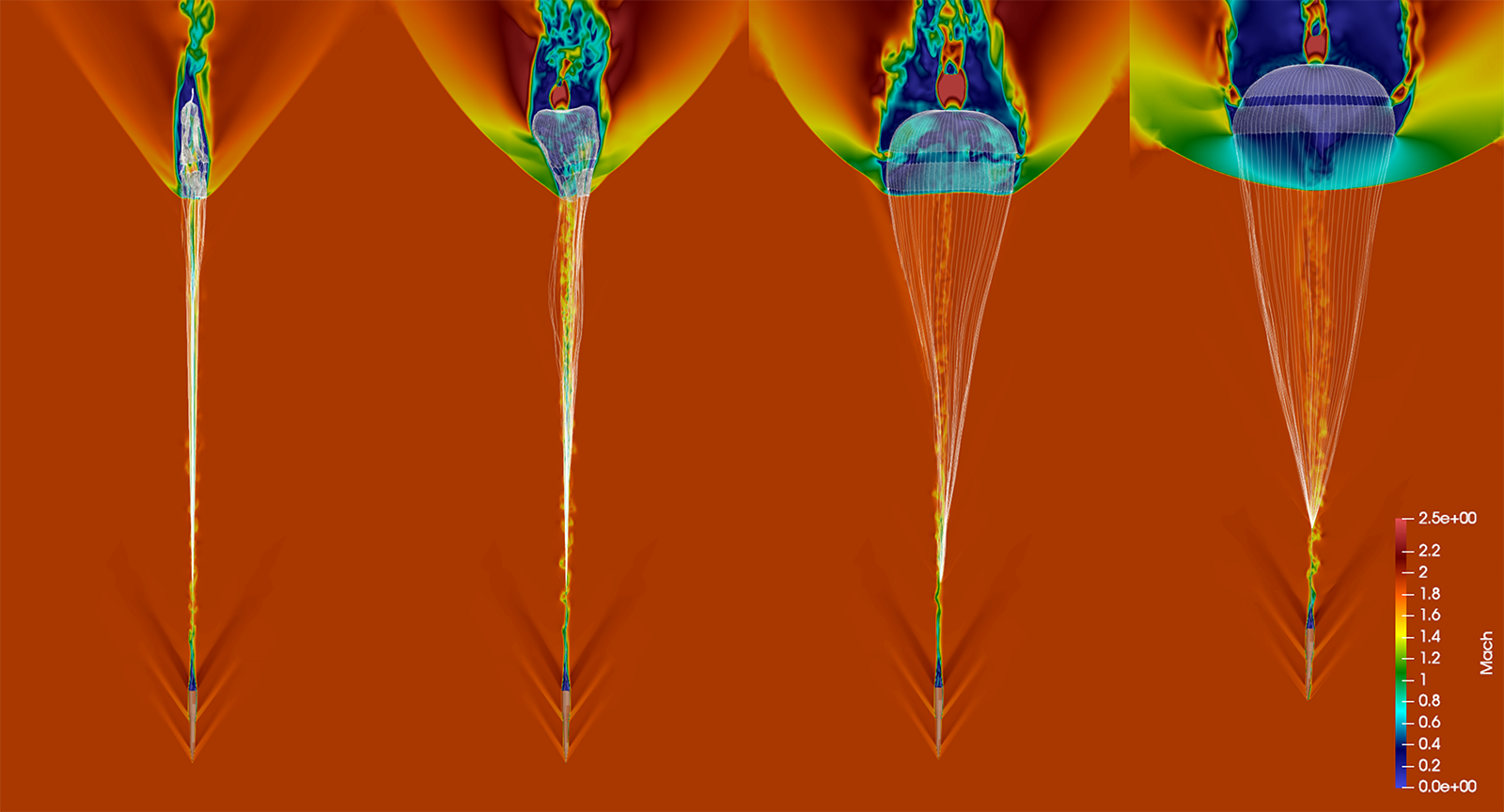
Stay Up to Date
Submit your email address to receive the latest industry and Aerospace America news.

The Applied Aerodynamics Technical Committee emphasizes the development, application and evaluation of concepts and methods using theories, wind tunnel experiments and flight tests.
In January, researchers at the Birla Institute of Technology and Science, Pilani in Dubai reported on their study of the effects of perforation on the characteristics of the downstream vortex of a micro-vortex generator, or MVG, using Reynolds-Averaged Navier-Stokes modeling. Such generators can enhance aircraft performance by introducing vortices in the boundary layer to delay stall. The computational study investigated the effect of placing a single circular and square perforation at different locations on the MVG, which was mounted on a flat plate. The generator was then placed inside a turbulent boundary layer at a Reynolds number of 16,293, based on its height and free-stream velocity. The results indicated that the MVG vortex is most effective when the perforation is at the center and lower side of the MVG. The vortex strength for the MVG with this perforation location was found to be much higher than that of an MVG without perforation.
In June, researchers from France, Germany, Italy, Sweden, Turkey, the U.K. and the U.S. reported on their multiyear study into the use of computational fluid dynamics for predicting vortex-dominated airflows generated by a generic missile airframe. Conducted under AVT-390, a NATO Science and Technology Organization research task group, the study consisted of extensive, systematic comparisons of Reynolds-Averaged Navier-Stokes and scale-resolving computations with data acquired from multiple wind tunnel tests, including pressure-sensitive paint and particle image velocimetry measurements. The researchers identified several residual numerical challenges in simulating vortices that could be applied to improving the stability and control analyses of missile configurations.
In June, NASA tested the Adaptable Distributed Electric Propulsion Testbed, or ADEPT, wing in the 12-Foot Low-Speed Tunnel at NASA’s Langley Research Center in Virginia. The tests were conducted under SUSAN, the Subsonic Single Aft Engine Electrofan aircraft project, in which NASA is assessing electric propulsion technologies that could reduce carbon emissions for commercial transport aircraft. With ADEPT, researchers can rapidly test electric propulsors along a wing to study propulsion-airframe interactions and propulsor-propulsor interactions for distributed electric propulsion designs. In the Langley wind tunnel test, they compared the propulsion-airframe interactions characteristics for up to five electric ducted fans placed in various positions across the wing, and studied how distributed electric propulsion could be leveraged for high-lift and lateral-directional control. The experiment indicated ideal fan placement for the SUSAN concept and provided experimental data to compare with results from computational methods.
In July, a joint team of researchers from Stanford University, NASA’s Jet Propulsion Laboratory and Stevens Institute of Technology tackled the challenging task of simulating supersonic parachute inflation dynamics. These fluid-structure interaction simulations involve capturing heterogeneous flow features at different scales, such as shocks, under-expanded jets, turbulent wakes and thin boundary layers. These complex flow features interact with the nonlinear porous woven fabric canopy and thin braided suspension lines of a parachute, which can be computationally expensive and challenging to model. This research focused on validating the multi-physics simulation environment, AERO Suite, in a simulation of supersonic parachute inflation dynamics by establishing sensitivity of the simulation accuracy to different choices. They simulated an inflation of JPL’s ASPIRE SR03 supersonic parachute and compared several quantities of interest to the flight data, identifying several areas for further analysis and improvement. Their goal was to establish best practices for numerical simulations of supersonic parachute inflation dynamics and to advance the potential role of computational fluid-structure interaction in the design and evaluation processes of inflatable aerodynamic decelerator systems.
Contributors: Faisal As’ad, Shashank Khurana, Magnus Tormalm and Rose Weinstein
Stay Up to Date
Submit your email address to receive the latest industry and Aerospace America news.



